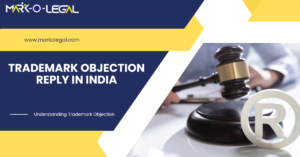The creation of a valuable intangible asset for the business and assistance in preventing unauthorized use of the mark are two benefits of having a registered trademark. Although the trademark registration procedure is drawn out, it normally takes 12 to 18 months to find out the ultimate outcome of a filed trademark application.
Many firms start creating a brand around a mark while the trademark application is still pending since the trademark application procedure takes so long. The work put into developing a brand is protected if the trademark application is ultimately granted and registered. However, there is a chance that the trademark will be in danger if the mark is not registered for some reason. Consequently, in this article, we examine some of the principal causes of trademark application rejection so you can avoid making these mistakes:
11 common reason are
1. Wrong Applicant Name
2. Incorrect address
3. Generic Terms
4. Descriptive Terms
5. Deceptive Trademarks
6. Offensive Terms
7. Marks Similar to an Existing Trademark
8. Official Marks
9. Wrong Trademark Class
10. Proper Goods or Service Description Not Mentioned
11. NO User Affidavit
1. Wrong Applicant Name
The majority of people who apply for trademark registration are businesses or other legal entities rather than individuals. Such applicants make one crucial error when submitting a trademark registration application: they just include the company name. You can’t carry out that. The names of the directors or partners must be entered when submitting an application as a company; otherwise, the trademark will likely be rejected.
2. Incorrect address
The right address can be entered into your trademark application pretty simply. But most of the time, a minor misspelling occurs, and most of the time, the candidate seems unconcerned. Their trademark application is hence typically denied
3. Generic Terms
Words or phrases that are frequently used and are typically found in dictionaries cannot be trademarked. For instance, a business cannot trademark “BOOKS” in order to sell books. The chair is a general term for the product, so one business cannot be granted the exclusive right to use it.
4. Descriptive Terms
Commonly used descriptive terms for products cannot be trademarked since they are regarded as descriptive terms. For instance, the descriptive beverage trademark HOT is likely to be rejected. It would be unfair to grant a business the sole right to promote its beverages as “HOT.” Therefore, these descriptive names for goods or services cannot be protected by a trademark.
Qualitative or laudatory phrases like SWEET, GREAT, BEST, INNOVATIVE, or CLASSIC cannot be registered as trademarks unless they are a component of another distinctive mark
5. Deceptive Trademarks
Trademarks that could mislead consumers about the nature, calibre, or place of origin of the product are considered deceptive trademarks. For instance, a polyester product’s trademark that has a cotton connotation would be disregarded as misleading.
6. Offensive Terms
A trademark cannot be registered if it contains derogatory language or words that are immoral or against the law. Additionally, trademark registration is typically not permitted for phrases or symbols that are deemed offensive or defy established moral standards.
7. Marks Similar to an Existing Trademark
Many trademark requests are turned down because they might compete with an already registered mark. Contravening the laws governing intellectual property, having two identical trademarks would confuse customers. Therefore, any trademark that is similar to or might be mistaken for an already registered brand would not be registered.
8. Official Marks
Official names, flags, armorial bearings, hallmarks, and insignia of states and international organizations are protected by national regulations, thus these elements cannot be used in trademarks.
9. Wrong Trademark Class
A trademark class organizes trademarks according to the goods or services they identify. For instance, you would select trademark class 33 if you wanted to sell alcoholic beverages and trademark class 25 if you wanted to sell shoes. There are 45 trademark classes in total, hence, the department will object to your trademark’s registration if you select the incorrect class of trademark when submitting your application.
10. Proper Goods or Service Description Not Mentioned
The explanation of the 45 trademark classifications is quite clear, however, they can be very confusing for a layperson. As a result, you must provide your product with a proper goods or service description. However, it has been found that most companies hardly know how to put together a description of their product or service. As a result, the descriptions are frequently unclear, which makes the department satisfied to deny your trademark registration application.
11. NO User Affidavit
If a trademark application has been filed on a user claim that means that the mark has been in use prior to the date of Application, the Applicant has to attach user affidavit along with supporting documents to establish the first date of use. Registry can object to your application if one fails to provide the same.
CONCLUSION
The above-mentioned errors are just some mistakes that you cannot make when attempting to register your trademark. Of course, despite doing everything correctly, there will occasionally be a dead end in the form of a trademark objection, although these situations are uncommon. Therefore, it is up to you to choose the trademark and properly file your application. You can let the trademark professionals handle the application filing process if you are still concerned about rejection and enjoy a hassle-free process today.

